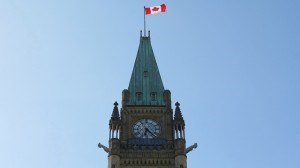
Jasper National Park will receive $65.9 million for a new biking and walking trail as part of billions of dollars doled out in the Liberal government’s first federal budget tabled in Ottawa, March 22.
The surprise announcement did not include any details about the new trail and Parks Canada directed questions to the Department of Finance, which did not provide a comment.
The federal budget also promised to provide Parks with up to $83.3 million to cover the cost of free admission to Canada’s national parks, national historic sites and marine conservation areas in 2017—a campaign promise made by Justin Trudeau to celebrate the 150th anniversary of Confederation. The money is also earmarked to provide free admission for all children under 18 years of age, beginning in 2018.
Canadian Parks and Wilderness Society (CPAWS) warmly welcomed the federal budget.
“The government has clearly recognized the need to make substantial investments in the conservation of special areas on land and in the ocean. We welcome the significant funding of $123.7 million for new national parks, and marine protected areas,” wrote Éric Hébert-Daly, national executive director of CPAWS, in a press release.
From that money, $42.4 million will go towards developing areas such as the Lancaster Sound National Marine Conservation Area in Nunavut and Thaidene Nene National Park, in the Northwest Territories. The remaining $81.3 million will be spent over five years to support and create marine conservation areas to protect 10 per cent of Canada’s marine and coastal areas by 2020.
“We are also pleased to see that funding for ocean science has been restored in the budget,” wrote Hébert-Daly, “however a similar commitment is also needed for national parks science funding.”
Making good on another of its promises, the government pledged to spend $16.6 million to help Parks expand its Learn to Camp program, develop new programming and encourage Indigenous storytelling and eco-tourism opportunities.
To stimulate the economy the government also earmarked $191 million over two years, to improve tourism and highway assets across several national parks, including $85.9 million to twin part of the Trans-Canada Highway through Yoho National Park, $21.6 million to pave highways through Wood Buffalo National Park and $17.7 million to build a new biking and walking trail in Pacific Rim National Park Reserve in British Columbia.
As well as funding for national parks, Finance Minister Bill Morneau doled out billions of dollars for infrastructure projects from coast-to-coast to help revive a sluggish economy and create more than 100,000 new jobs. He also promised billions more to help families, students, low-income seniors, the unemployed and Indigenous people.
“This budget puts people first and delivers the help Canadians need right now,” Morneau told the House of Commons in Ottawa.
“It is an essential step in a sustained and strategic effort to restore prosperity and optimism.”
While the funding commitments make good on many of the Liberal’s election promises, the government is no longer promising to balance the books by the next election, breaking one of its main campaign promises.
According to the budget, this year's budget deficit will be $29.4 billion.
The projected deficit for 2019/20 , the year Canadians return to the polls, is $17.7 billion, although that could change if the economy and oil prices rebound.
For a breakdown of the budget, check out our story: What the 2016 federal budget means for you.
